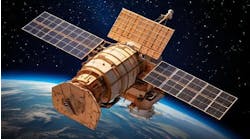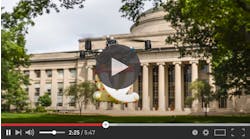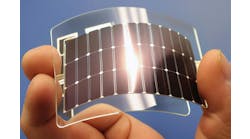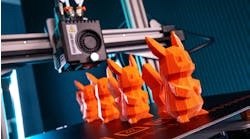Hi-Tech Mold & Engineering is about as traditional a mold maker as it gets. Located just half an hour outside Detroit, the company has been pumping out injection molds for the automotive industry for about 35 years.
Like most companies in this industry, when industrial printing first hit the scene, Hi-Tech wasn’t exactly enthusiastic to jump on board.
“As metal printing started to take hold, we brushed it off,” recalls Steve Killoran, Hi-Tech’s additive manufacturing specialist. “But as more materials came out and interest started developing, we decided to try it out. We had a few components made by these service bureaus just to kick the tires.”
Some of those components were good, he says, some of them weren’t. But in the end, they saw some real potential in the technology.
Killoran says the company originally got into additive as a means to create conformal cooling circuitsinside inserts to help balance out the thermals of the tool—one of the clear advantages the technology offers this industry.
However, that was only the beginning.
After a bit of experimentation, the company found it could not only make better parts, it could also save a lot of time—and a lot of money—in the process.
“Some of our small, intricate pieces would require two or three setups on the CNC machine, and then they would have to go to EDM and then to the gun drill to have water circuits put into them, and so on. At that point you’re having seven or eight different setups or processes to manufacture just one component.” he explained. “Now with additive, all of that is done with one process and one setup on one machine and then it’s complete.”
“When you cut out those additional processes, you can save a lot,” he added.
And it’s not just time he’s saving, he notes. Eliminating those extra processes means freeing up all of those other machines to do other jobs and also eliminating all the inevitable issues and errors caused by multiple setups in multiple departments.
“When you can take an intricate or complex component and get it all done in one spot and one location,” he explains, “even though the material may be more expensive, you’re still saving money by eliminating all of those extra processes.”
No Magic Bullet
Even with all of these advantages, Killoran notes, additive still isn’t right for every project.
“It’s not a magic bullet,” he says. “You’ve really got to pick and choose where you use it at this point.”
One issue he has encountered with the technology so far, he says, is with surface finish.
While his team has been able to dial in tolerances to plus or minus 1/1000th of an inch right out of the machine and achieve a hardness between 52 and 56 on the Rockwell C range after heat treatment, jobs requiring P20 steel with a lens quality, mirror finish require too much post-processing and polishing to justify the cost.
“With the DMLS process, you can get almost to that level, but you’re always going to have some micro inclusions—some little pits on a micro level in the steel,” he says. “The mechanical and chemical properties of additive steel are on par with our traditional tool steels—in some cases they exceed them. But the surface finish is the real limitation.”
Go Big
After its early experiments with service bureaus, Hi-Tech finally invested in its own DMLS machine in late 2014. In January 2015, it began producing components for plastic injection molds and putting those components into actual jobs.
The reaction from the clients, Killoran notes, has been sort of a mixed bag.
“In the metro Detroit area, there’s this kind of, ‘if it ain’t broke, don’t fix it’ mentality,” he says. “There’s some skepticism because it’s not a traditional P20 or H13 material. But we’re putting this into more and more tools, and we have not had any failures.”
“That’s how they come around,” he says. “The math is all there; the material properties are all there. They’re starting to gather some empirical data on that and becoming a little bit more positive about it.”
Outside that traditional circle, however, interest seems to be overwhelming.











